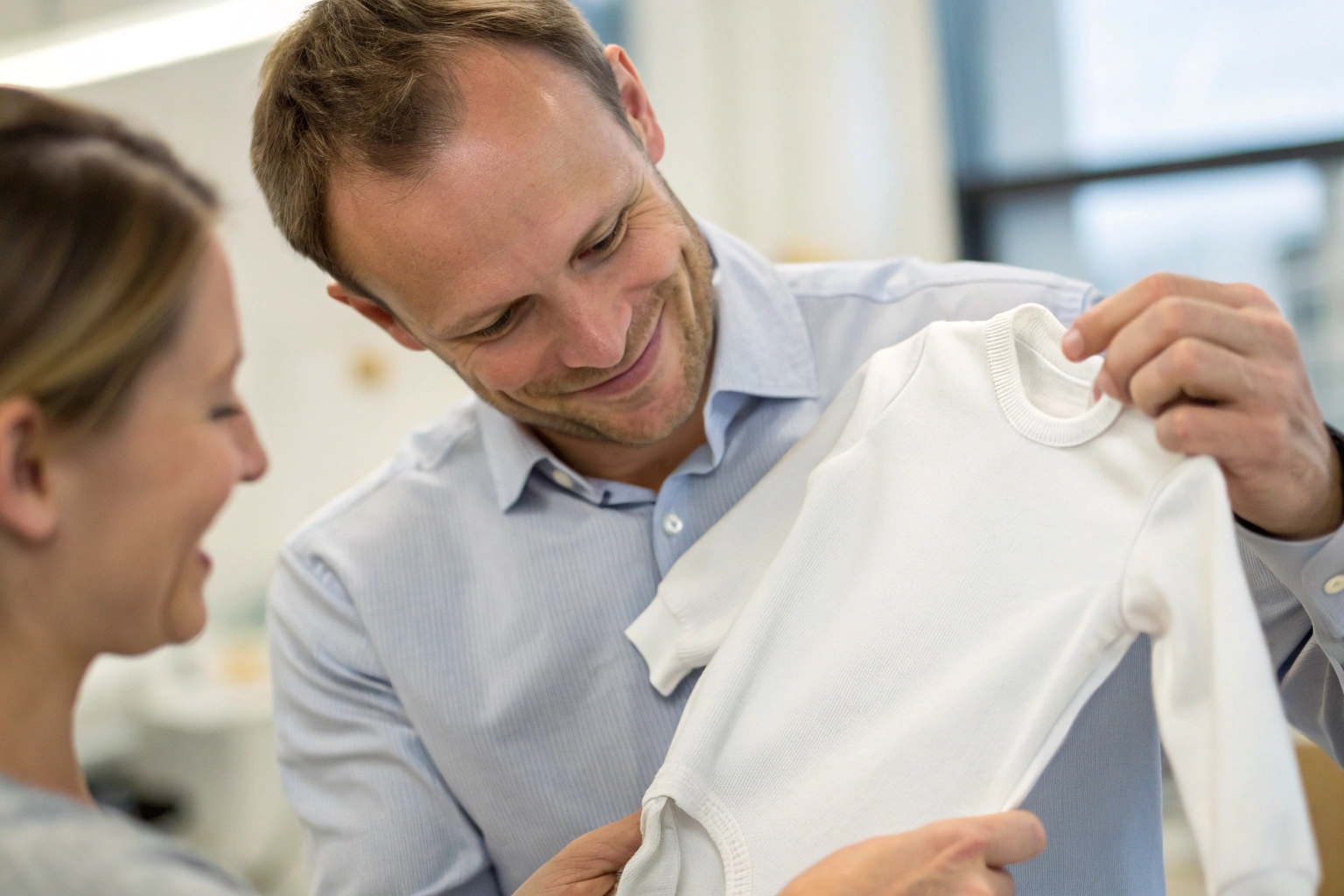To the untrained eye, baby clothes might all look the same. But experienced parents—and brand buyers—know the difference is in the details.
Premium babywear stands out through superior fabrics, precise construction, thoughtful design, and a brand story that builds trust and emotional value.
I’ve worked with both boutique babywear brands and mass suppliers. Let me walk you through the details that turn a basic onesie into something worth remembering—and rebuying.
What Fabrics Set Premium Babywear Apart?
When parents touch a baby romper, the first thing they notice is the fabric. It’s either soft and breathable—or rough and forgettable.
Premium babywear uses higher-grade materials like organic cotton, bamboo, or muslin that are gentle, durable, and certified for safety.
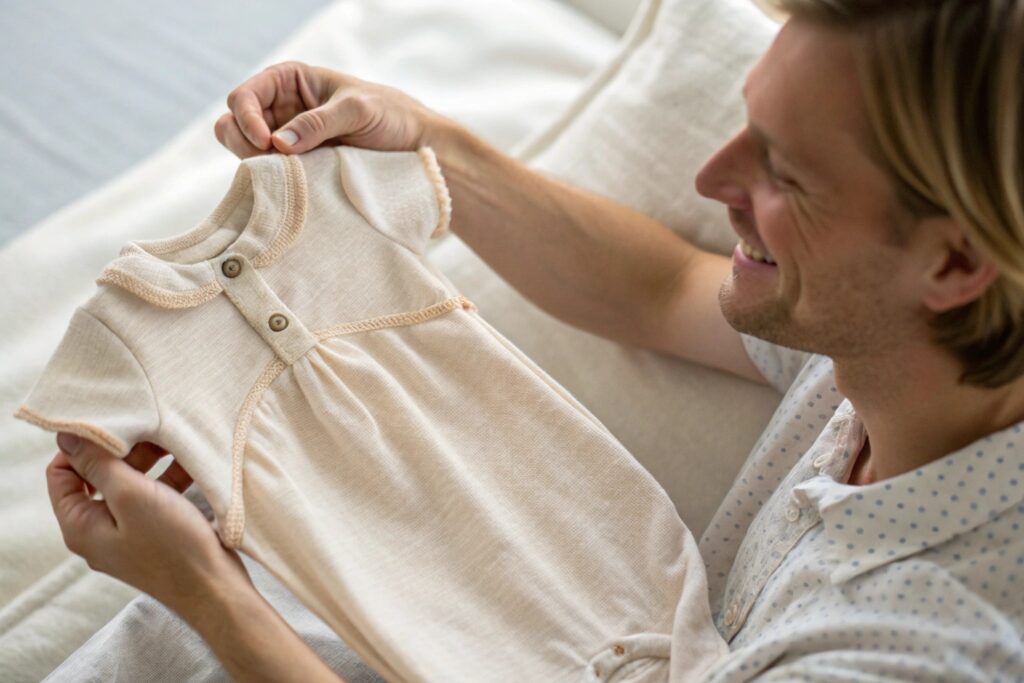
How do premium babywear fabrics offer better skin safety, softness, and long-term durability compared to generic blends?
Fabric choice impacts not just comfort, but health and longevity. Here’s what makes premium fabrics different:
| Fabric Type | Features | Why It Matters |
|---|---|---|
| Organic Cotton | Grown without pesticides, breathable | Reduces skin irritation |
| Bamboo Rayon | Silky soft, antibacterial, moisture-wicking | Keeps baby cool and dry |
| Muslin Cotton | Lightweight, gauzy, strong when wet | Ideal for summer and layering |
| Modal | Soft, stretchy, holds dye well | Looks vibrant, feels cozy |
At Fumao, we often work with clients who request GOTS-certified fabrics. We source from mills that meet strict chemical safety standards, because we know many parents care about what touches their baby’s skin.
One client asked us to switch from conventional to organic cotton. Though the cost per unit went up slightly, customer satisfaction—and repeat orders—rose significantly.
How can you test or verify the fabric quality before committing to a bulk order?
Always ask for swatches before sampling. Feel the texture, wash it, stretch it. Here’s a simple checklist we give to buyers like Ron:
- Does the fabric feel smooth, not scratchy?
- Does it return to shape after stretching?
- Does it pill or fade after washing?
- Does it carry any third-party safety certification?
Premium fabrics hold up better over time, which also reduces return rates and boosts long-term brand trust.
How Stitching and Finishing Define Quality?
Even the best fabric can be ruined by bad construction. The difference between premium and generic lies in how well the garment is made.
High-end babywear features precise stitching, reinforced seams, and finishing techniques that ensure both comfort and durability.
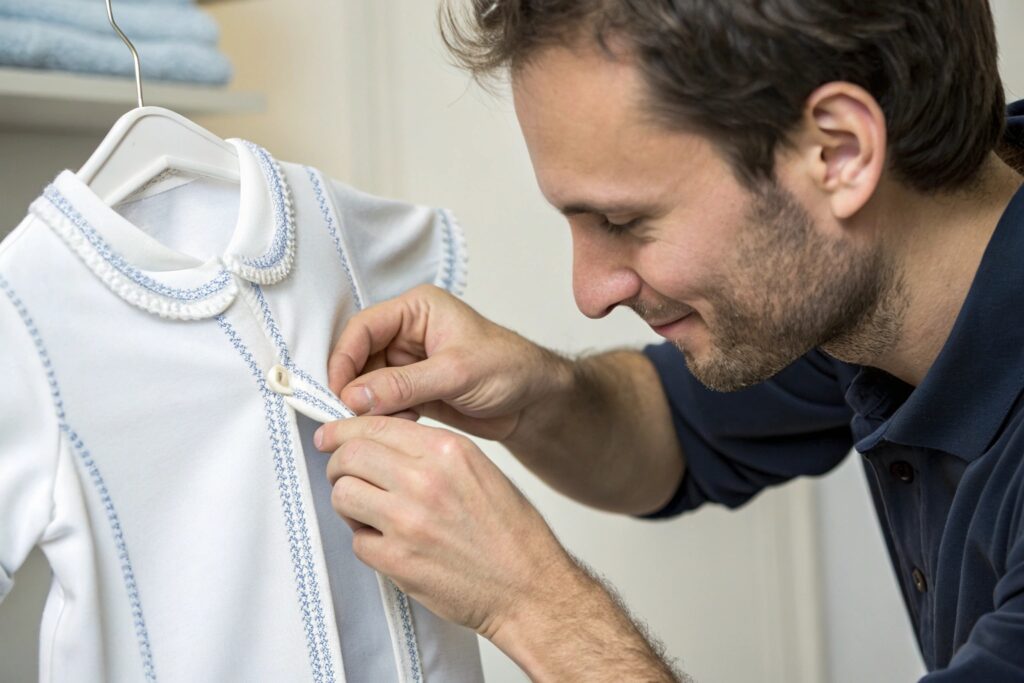
What sewing techniques and finishing details separate luxury onesies from basic mass-market ones?
Let’s compare:
| Detail | Premium Onesie | Generic Onesie |
|---|---|---|
| Stitching | Flatlock or coverstitch (soft seams) | Overlock (can be bulky or scratchy) |
| Seam Finish | Clean edge binding or topstitching | Raw or minimal seam trimming |
| Snap Closures | Nickel-free, reinforced placket | Basic snaps, prone to detachment |
| Label Type | Printed tag or hidden woven label | Scratchy sewn-in label |
| Sleeve & Neck Hem | Double-folded, stretchy ribbing | Single-fold hem, may fray |
At Fumao, we pay special attention to stress points—like neck openings and leg holes—where tearing or discomfort often happens. Our finishing team does triple checks before packing.
We once revised a client’s baby tee to use enclosed seams and covered buttons after feedback from moms with sensitive-skin infants. That style went on to become a bestseller in their store.
How do these construction choices affect long-term brand reputation?
One scratchy seam or popped button can ruin a parent’s trust. On the other hand, a well-sewn onesie becomes the piece they keep—even pass down.
Good construction means fewer returns, better online reviews, and stronger emotional connection. We’ve seen firsthand how customers remember the “feel” of a garment long after the size no longer fits.
Why Fit and Comfort Matter in High-End Baby Clothes?
Babies can’t speak—but they can squirm, cry, and pull at uncomfortable clothes. Fit is everything, especially in premium babywear.
Premium babywear is designed to fit real babies—not mannequins—offering freedom of movement, gentle stretch, and comfort in every stage of growth.
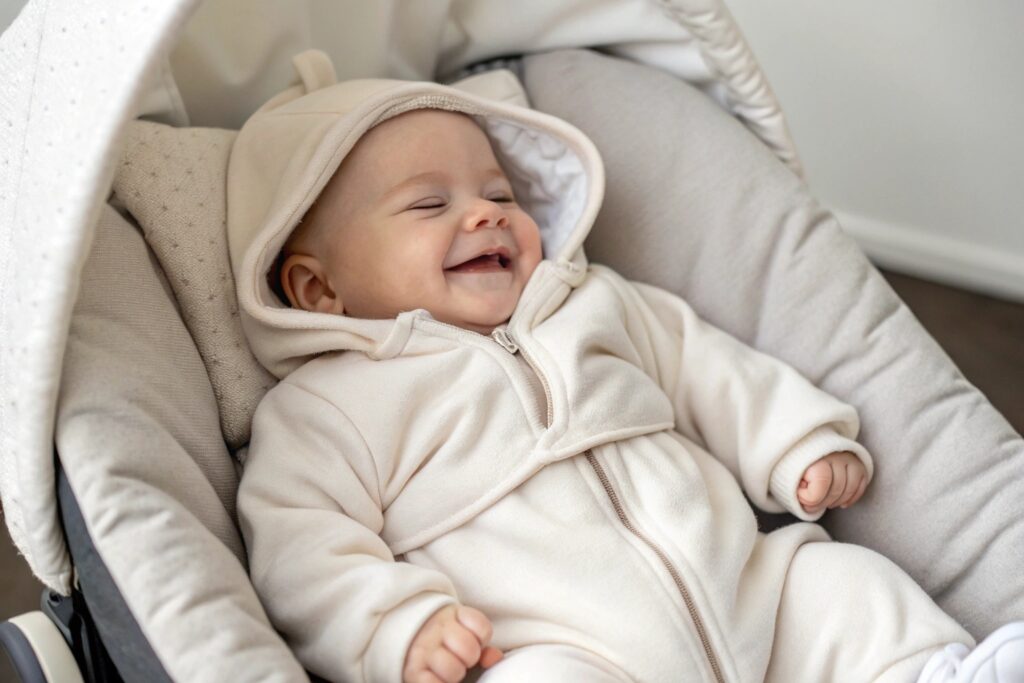
What design choices ensure better fit and comfort for babies in premium clothing?
Here’s what I recommend (and what we build into many Fumao client designs):
- Raglan sleeves for arm movement
- Elastic leg openings that don’t pinch
- Envelope necklines or side snaps for easy dressing
- Gussets in onesies for diaper space
- Extra length in bodysuits to grow with the baby
We once redesigned a onesie for a French brand that had received negative reviews about neck tightness. By adding a crossover shoulder seam and slightly altering the rib fabric, we turned a complaint into compliments.
How does good fit reduce returns and build emotional trust with parents?
Returns are expensive. But more importantly, they hurt brand trust.
Parents remember the onesie that made diaper changes easier. The tee that fit across a chubby tummy. The romper that stayed soft after three washes.
Better fit equals happier babies. Happier babies mean less fuss. Less fuss makes parents trust your brand again and again.
We’ve helped clients reduce their return rates by 40% just by adjusting fit after early feedback. That’s the power of design that thinks like a parent.
What Makes Luxury Babywear Brands Stand Out?
Luxury babywear is more than fabric and stitching—it’s a full experience. From branding to storytelling, every touchpoint matters.
Luxury babywear brands stand out through storytelling, premium packaging, ethical values, and a clear design voice that connects with modern parents.
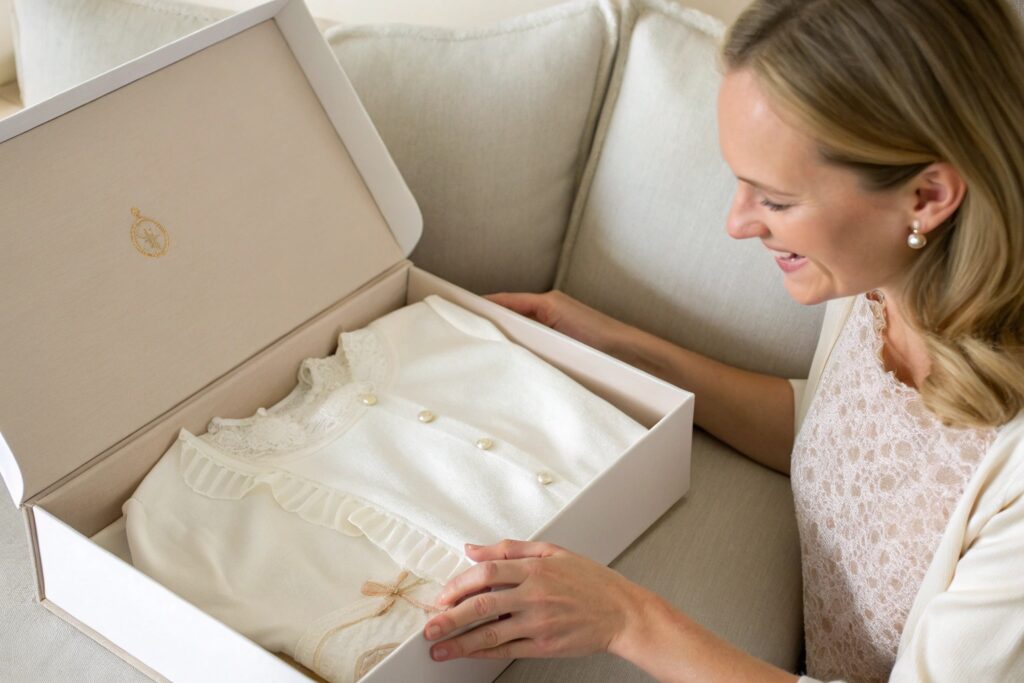
How do luxury brands communicate value beyond the product itself?
Here’s what top babywear brands do differently:
- Consistent brand tone across site, labels, and social media
- Minimalist, recyclable packaging that looks elegant
- Transparency in sourcing and factory partnerships
- Storytelling about the founders, design process, and materials
- Emotional branding (e.g., "Made for your baby’s first moments")
At Fumao, we’ve supported brands that include welcome cards, brand booklets, and even fabric origin maps in each package. These details may cost pennies—but they make the product feel like a gift, not just a purchase.
What role does packaging and unboxing play in defining a premium feel?
Here’s how packaging affects perception:
| Element | Premium Feel | Generic Feel |
|---|---|---|
| Box/Bags | Matte-finish box, tissue wrap, logo seal | Plastic polybag with barcode |
| Labels | Soft tag, thank-you note, custom font | White sticker with SKU |
| Messaging | “Welcome, little one” | “Size 6M, 100% cotton” |
The unboxing experience is the first emotional contact with your brand. One client told us that their box was reused by moms to store baby keepsakes—that’s branding gold.
Conclusion
The difference between premium babywear and generic onesies is in the fabric, stitching, fit, and emotional connection. When every detail is considered, you don’t just make clothes—you make memories.

